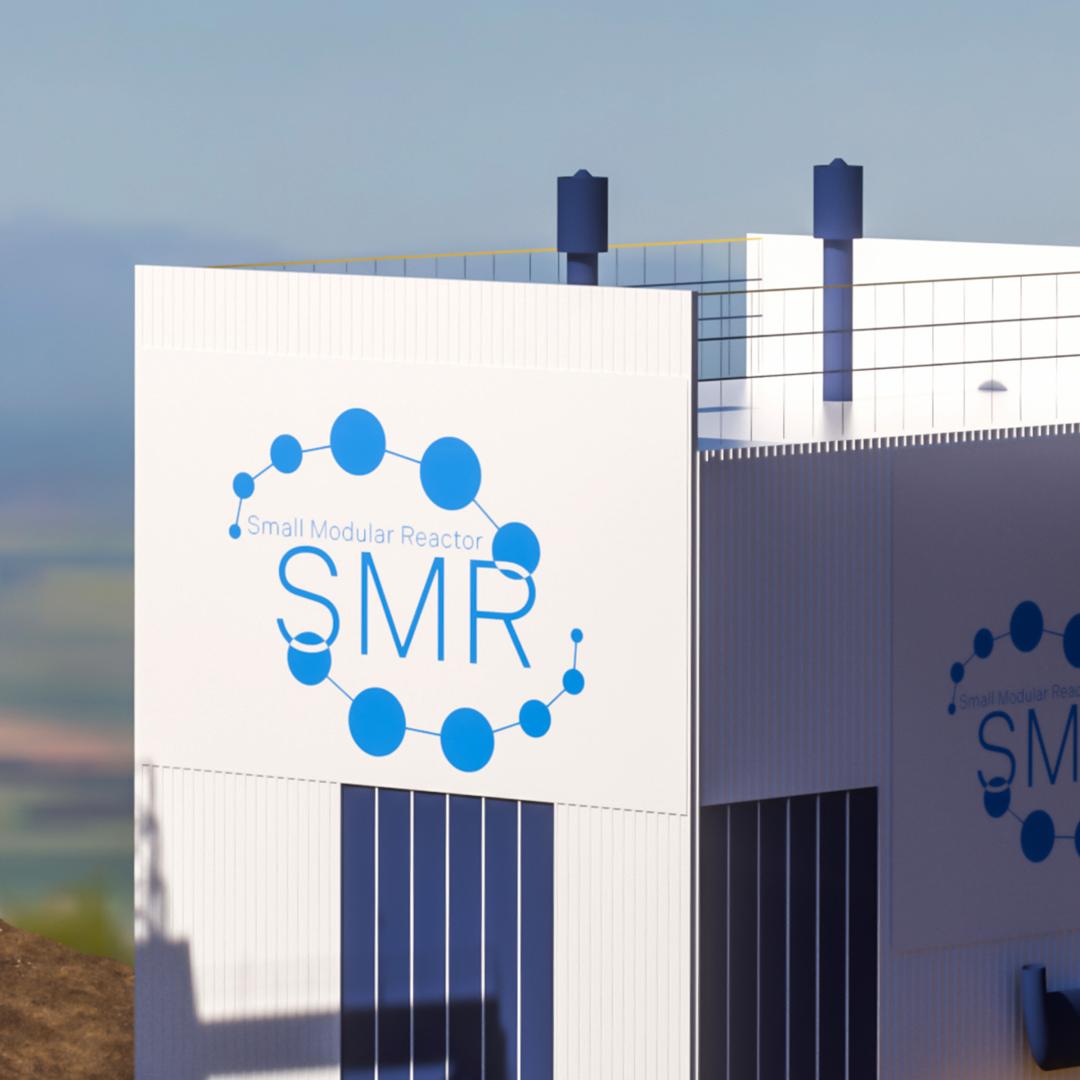What is it?
Small modular nuclear reactors (SMRs) are advanced reactors that produce low-carbon electricity by harnessing the heat from nuclear fission, an established and well-understood physical process. The innovation of SMRs lies primarily in their design. Typically smaller than traditional reactors, with a capacity of less than 300 megawatts (MW), SMRs are factory-built for enhanced quality control. This design allows them to be delivered to installation sites more quickly and potentially at a lower cost compared to conventional reactors, which typically range in capacity from about 700 MW to over 1,600 MW. While SMRs are generally considered "utility-scale" in their capacity, their smaller size makes them a viable option for smaller-scale applications, such as large micro-grids. These reactors can be assembled in a modular fashion, allowing incremental capacity additions. Additionally, some SMR designs boast enhanced safety features, including passive cooling systems that can function without external power sources, reducing the risks associated with reactor overheating or meltdowns. Currently, several countries are planning the deployment of SMRs, particularly China and the United States. Given their modular nature, several African countries, such as Ghana, are also looking toward SMRs to address their energy access deficits. Based on current plans, the International Energy Agency expects several countries to have multiple SMRs installed and operational by around 2030.
Does it work?
The physics behind SMRs is sound, and their potential as low-carbon energy sources is also scientifically valid, as they do not emit GHG emissions during operation. Several pilot SMR projects have also been launched. SMRs have yet to move beyond the demonstration phase to widespread commercial adoption. No SMR is currently deployed at the scale necessary to reduce global emissions measurably. Furthermore, independent, peer-reviewed empirical data on long-term operational performance, scalability, and cost remain sparse. While several countries, including the United States, Hungary, China, and Ghana, have announced plans or are discussing deploying SMRs within the next decade, those plans are still in the preparatory stages.
Why are we excited?
SMRs have several features that make them appealing as a potential climate solution. If scaled appropriately, they could displace fossil-fuel-based power generation and reduce carbon emissions significantly. Projected deployment scenarios by the Nuclear Energy Agency suggest that by 2050, the global SMR market could reach 375 gigawatts of installed capacity, avoiding up to 15 Gt of cumulative CO₂
emissions. Their smaller size and modular nature reduce financial risk, making them potentially more accessible to developing countries or smaller utilities. They are also flexible in siting and can complement variable renewable energy sources like solar and wind by providing reliable baseload or backup power. Additionally, SMRs could help decarbonize hard-to-electrify sectors like process heat in industry or remote energy systems. These attributes have prompted excitement among proponents who see SMRs as a scalable, flexible, and resilient solution for emissions-free power.
Why are we concerned?
Despite their promise, SMRs face several challenges that limit their readiness for large-scale deployment. Safety remains a concern – not necessarily because of design flaws, but because any nuclear reactor carries inherent risks. Waste disposal and the potential for proliferation of nuclear materials remain persistent issues. Regulatory hurdles are also significant, as existing frameworks are often geared toward conventional reactors and may slow the licensing of newer designs. The cost of SMRs is another outstanding question. Recent analyses by Wood Mackenzie suggest that SMRs could cost US$6,000 to US$8,000 per kilowatt of capacity, which is well above the costs of utility-scale solar (US$1,448) or onshore wind (US$2,098). Deployment timelines also pose a challenge. Given the urgency of climate action, technologies that cannot be deployed at scale within the next 10–15 years may offer limited near-term benefits. A recent study by the Institute for Energy Economics and Financial Analysis opines that SMRs are still too costly, too time-consuming to construct, and too risky to significantly impact the transition away from fossil fuels in the next decade. While peer-reviewed academic studies have been conducted, a comprehensive, independent evaluation of large-scale deployment remains absent.

